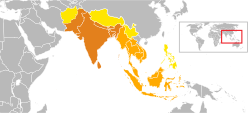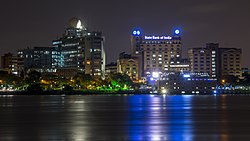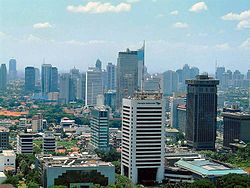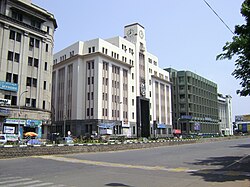Fishing
Fisheries is an important economic activity in countries with coasts along the Bay of Bengal, particularly in Sri Lanka, India, Bangladesh, Myanmar, Thailand, and Indonesia. The fishing industry in the Bay of Bengal area provides employment and sustenance to large numbers of people. Based on a recent estimate, the total number employed on a full-time basis in fisheries in the area covered by the Bay of Bengal is 1.85 million. In addition, a large number of people are engaged in fishing as a part-time activity. The total population in the households of those engaged in fishing, full-time or part-time, in this area, is estimated at ten million. [26]
In recent years, the fishing industry has developed into an important earner of foreign exchange through the export of marine and aquatic products. In Bangladesh, fish exports account for 15 percent of the total export earnings. Though the percentage contribution of the fisheries sector to the total export earnings of the country is yet marginal in the other countries in absolute terms, the export earnings have been increasing very fast. As export items, fish and fish products are very important, as the net earnings from these products are extremely high, a result of their being almost one hundred percent local resource-based. [26]
The increased production of marine fish has come primarily through the motorization of traditional craft, the introduction of new craft, and the introduction and popularization of new types of synthetic gear, which have replaced traditional gear. It is in Thailand alone, that the private/commercial sector has taken the initiative of introducing and extending craft and gear; there has been very little state support or intervention in these activities in this country. [26] The increasing emphasis accorded to the development of coastal aquaculture is another feature common to almost every country in the region. In countries such as Bangladesh, Sri Lanka, and India, a primary reason for the increased emphasis on coastal aquaculture is the increase in foreign exchange earnings generated from shrimp farming. [26]
Transport
The Port of Colombo in Sri Lanka handles over 5 million twenty-foot equivalent units (TEU)s of container traffic. The Port of Chittagong in Bangladesh handles over 2 million TEUs of container traffic. The Port of Chennai in India handles around 1.7 million TEUs of container traffic. Ports that handle over 100,000 TEUs of container traffic include the Port of Kolkata, Tuticorin Port Trust, the Port of Yangon, the Port of Mongla, and the Port of Vizag. Colombo is the busiest seaport in BIMSTEC. Chittagong is the busiest seaport on the Bay of Bengal coastline, [27] followed by Chennai, Kolkata, Tuticorin, Yangon, Visakhapatnam, and Mongla. [28] [29] [30] [31] [32] Sittwe Port and Hambantota are other important ports in the region.
Thailand and India signed direct coastal shipping agreements with Bangladesh in 2016. [33] [34]
Busiest seaports (2015-16)













